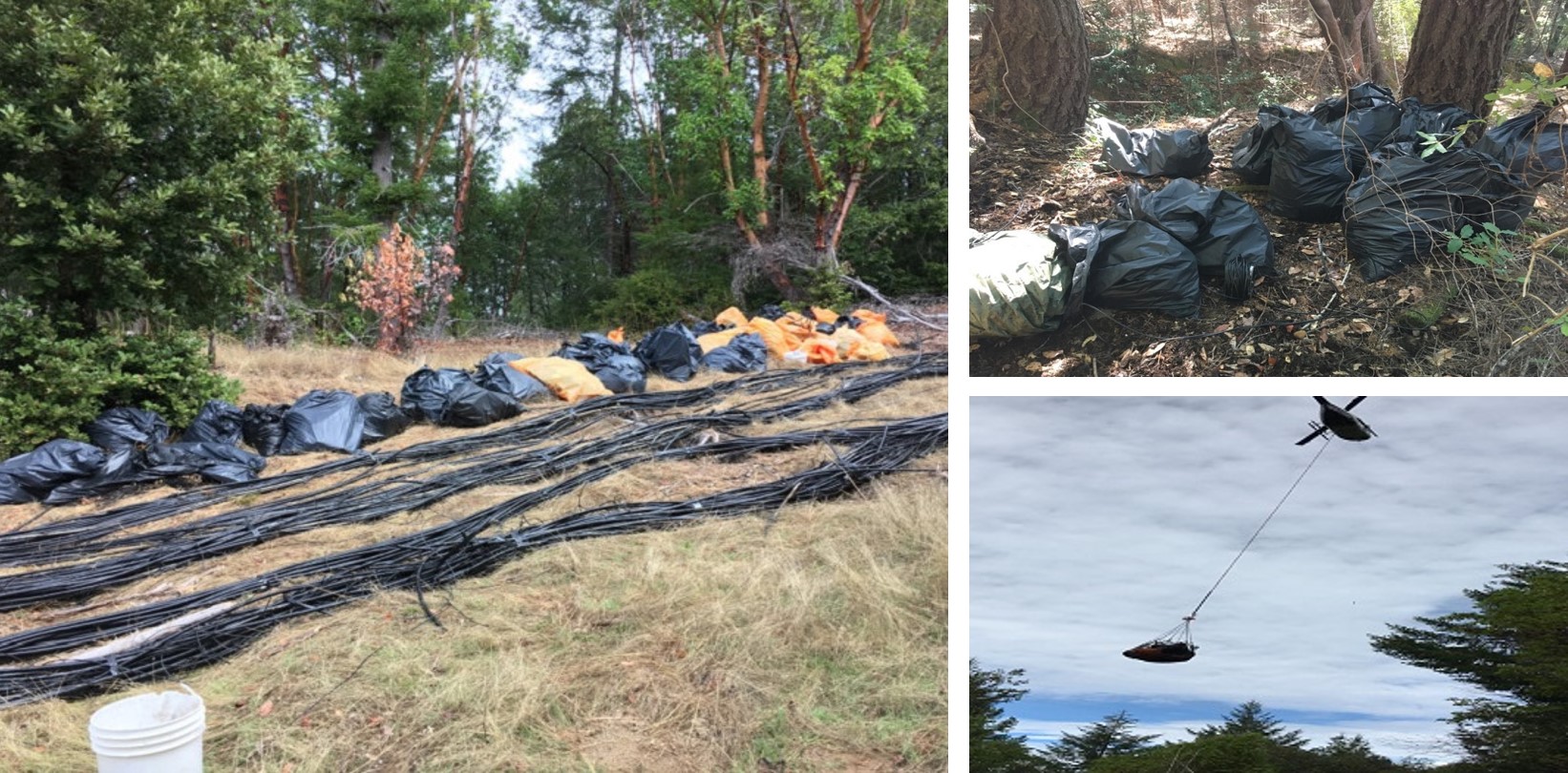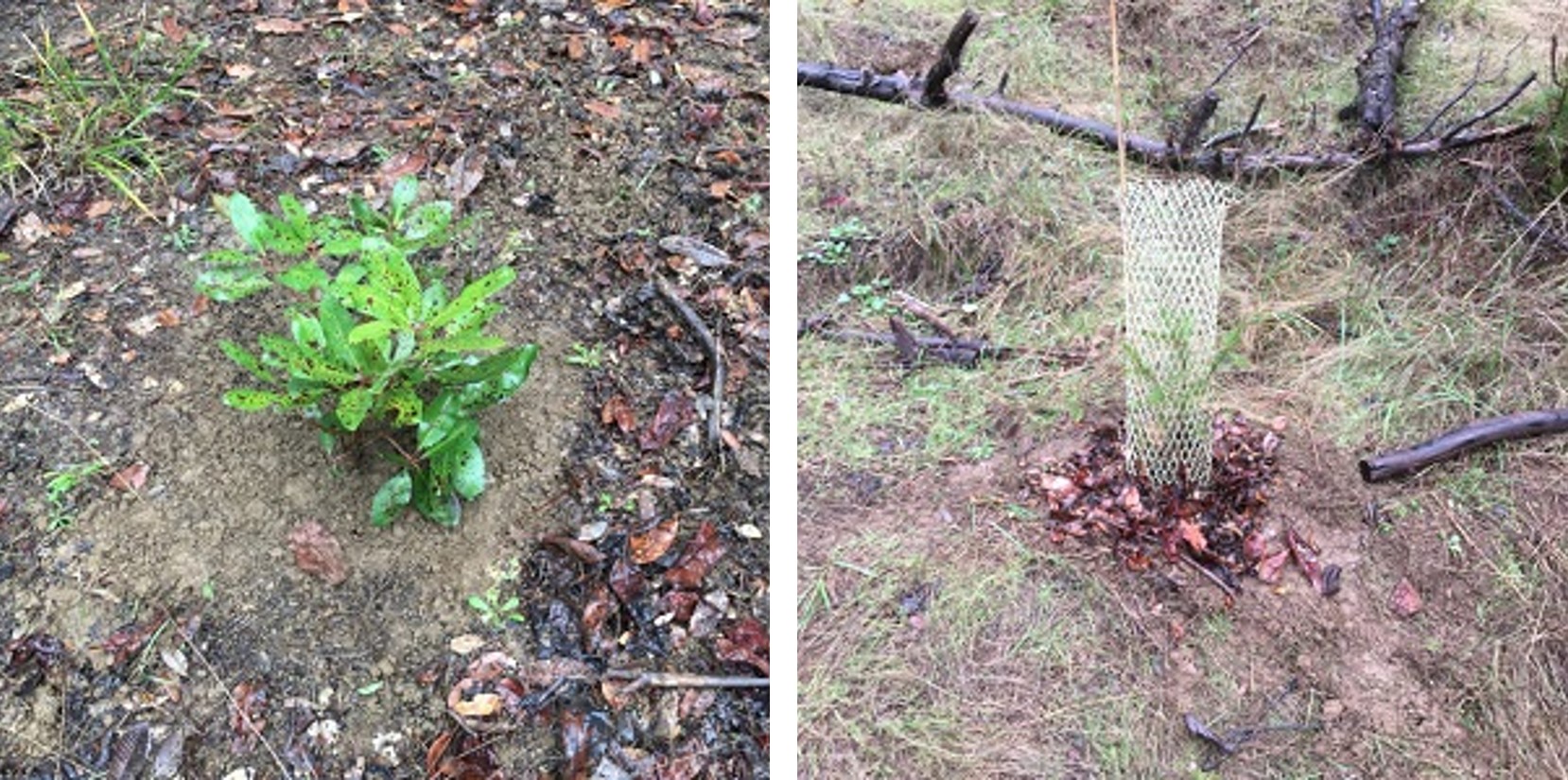Project Goals
This project was a partnership between Eel River Watershed Improvement Group (ERWIG), California State Parks (SP), Integral Ecology Research Center (IERC), and the California Conservation Corps (CCC), and aimed to accomplish the purposes and objectives of the 2017 Cannabis Restoration Grant Program by removing and remediating impacts of cannabis cultivation in the Bull Creek watershed.
Humboldt Redwoods State Park has suffered the effects of illegal cannabis cultivation for over three decades. Illegal cannabis cultivation creates a severe hazard to fish and wildlife by littering the landscape with plastic trash, toxic pesticides, fertilizer, propane canisters, fencing and filament wire. This project addressed the clean up of two extensive grow areas in the Bull Creek Watershed of Humboldt Redwoods State Park. Immediate action was required to remove contaminants from the environment before causing additional impacts to wildlife.
Project Accomplishments and Ecosystem Outcomes
In total, six trespass cannabis cultivation sites were cleaned up in the Bull Creek watershed. All cultivation infrastructure, toxins, and trash were removed from the sites. In total, 5,100 pounds of refuse was removed, including over 2.0 miles of poly pipe, and 0.25 gallons of liquid hazardous waste. Additionally, two water diversions were removed.
This project benefited anadromous salmonids and water quality by removing diversions, fertilizers, toxins and trash that were entering watercourses leading to fish bearing streams. The project also directly benefited northern spotted owls, Pacific fisher, their prey, and other wildlife species through the removal of pesticide containers and other trash. Hazardous waste was disposed of at a hazardous waste facility. Water basins and diversions were restored and the sites replanted with conifers and native oaks. These cleanup and restoration efforts made reoccupation less likely.
 Refuse and irrigation piping removed and organized (left and top right) for helicopter removal from the Bull Creek Watershed (bottom right). Photos courtesy of the Watershed Restoration Grant Program and Eel River Watershed Improvement Group.
Refuse and irrigation piping removed and organized (left and top right) for helicopter removal from the Bull Creek Watershed (bottom right). Photos courtesy of the Watershed Restoration Grant Program and Eel River Watershed Improvement Group.
Specifically:
- Removal of 0.25 gallons of Sevin brand insecticide, which is extremely toxic to fish. All project sites were within a few hundred feet of seasonal streams that input directly into salmonid bearing creeks. Removing liquid toxins helped protect listed salmonid species from harm.
- Approximately 0.5 pounds of rodenticide was found during the cleanup, as well as many empty containers of rodenticide. Rodenticide can work its way up the food chain and sicken or kill non-target species. The project removed this threat to wildlife.
- The Mill Creek site had substantial bird netting strung along the cultivation site borders in order to control wildlife entry to the sites. Removing the netting not only eliminates the habitat fragmentation caused by the barriers, but also prevents wildlife from entanglement and strangulation.
- A majority of the garbage found at the sites was food refuse. Though this food may smell attractive to wildlife, it is not nutritionally supportive. All the waste food was spoiled and moldy and eating it may lead to the ingestion of packaging as well. Wildlife that eat human food out of garbage piles may also become habituated to humans which puts them in danger.
- Two water diversions were removed, all of which were gravity fed. At the time of the project, the diversions were not operational. Based on a rough total estimate of 6,000 plants grown each year, the infrastructure that we removed could have been delivering about 4,722,000 gallons per season (787 gallons per plant).
- In the winter following cleanup 400 Douglas firs, 25 madrone and 100 redwood trees were planted in areas that had been cleared of trees for cannabis cultivation activities.
 Replanting efforts at the Whiskey Flat and Mill Creek site, within the Bull Creek Watershed. Photos courtesy of the Watershed Restoration Grant Program and Eel River Watershed Improvement Group.
Replanting efforts at the Whiskey Flat and Mill Creek site, within the Bull Creek Watershed. Photos courtesy of the Watershed Restoration Grant Program and Eel River Watershed Improvement Group.